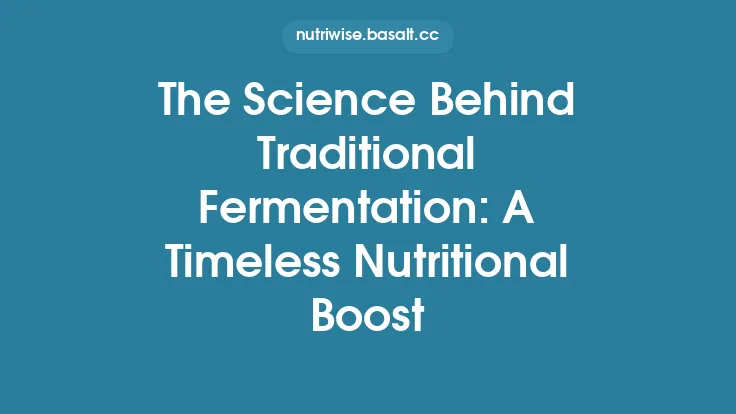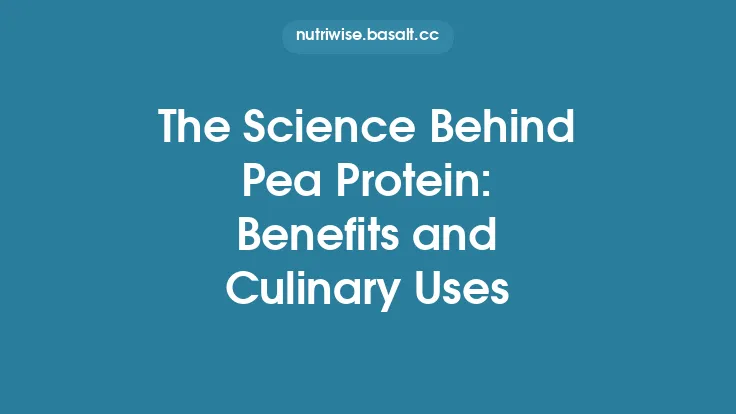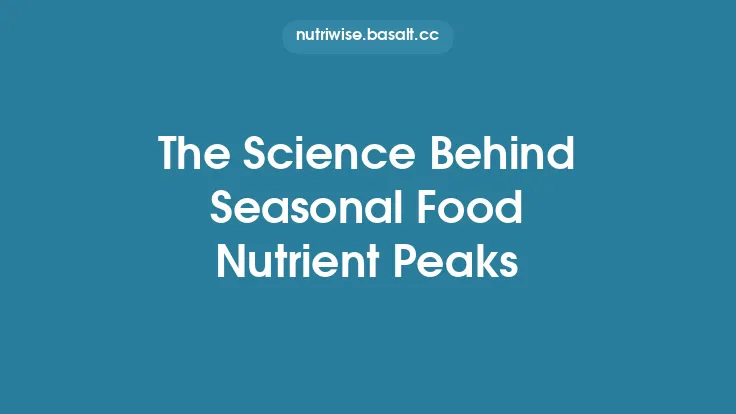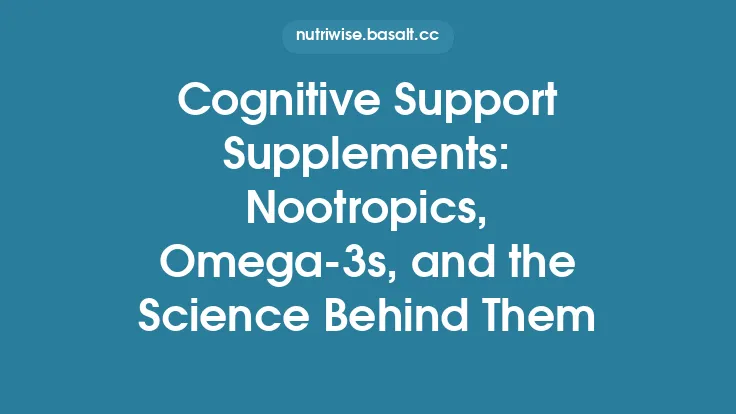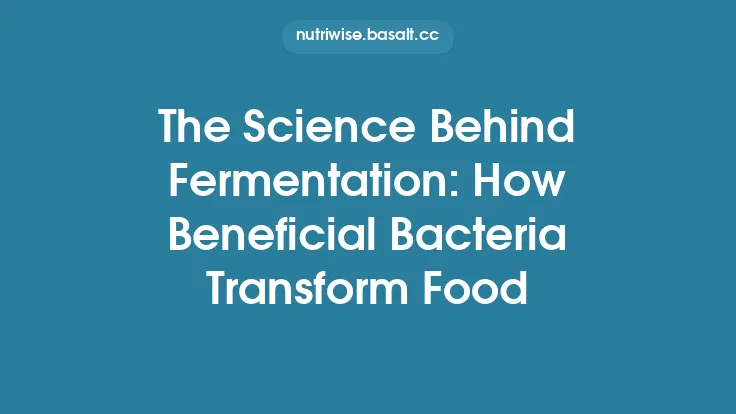Flavor is one of the most immediate ways we experience food, yet the combinations that delight our palate are far from random. Across continents, cooks have discovered pairings that seem to resonate on a deep, almost instinctual level—think of the harmony between soy sauce and ginger in East Asia, the classic marriage of tomato and basil in the Mediterranean, or the surprising yet beloved union of chocolate and chili in Latin America. While cultural narratives and tradition certainly shape these choices, a growing body of scientific research reveals that the underlying chemistry, neurobiology, and cognitive processes play a pivotal role in determining why certain ingredients “fit” together. This article explores the scientific mechanisms that drive flavor pairings across cultures, highlighting the molecular commonalities, perceptual pathways, and methodological tools that help us understand—and eventually predict—successful combinations.
Molecular Foundations of Flavor
1. Volatile Aroma Compounds
Aroma accounts for up to 80 % of what we perceive as flavor. Volatile organic compounds (VOCs) such as esters, aldehydes, terpenes, and pyrazines evaporate at room temperature and bind to olfactory receptors in the nasal cavity. When two foods share a significant overlap in their VOC profiles, the brain registers a sense of familiarity, often translating into a perception of “good match.” For example, both rosemary and pine share the monoterpene α‑pinene, which contributes to their complementary aromatic character.
2. Non‑Volatile Taste Molecules
Taste receptors respond to non‑volatile substances: sugars (sweet), salts (salty), acids (sour), glutamates (umami), and bitter compounds (alkaloids, phenolics). The presence of shared taste-active molecules can reinforce a pairing. A classic illustration is the pairing of miso (rich in glutamate) with seaweed, both high in umami, creating a synergistic depth of flavor.
3. Flavor‑Enhancing Interactions
Certain compounds act as flavor amplifiers. The Maillard reaction, which occurs when amino acids react with reducing sugars under heat, generates a complex mixture of melanoidins, pyrazines, and furans that enhance both aroma and taste. When a food rich in reducing sugars (e.g., carrots) is cooked with a protein‑dense ingredient (e.g., chicken), the resulting Maillard products can bridge the two components, making the pairing more cohesive.
4. Shared Precursors and Biosynthetic Pathways
Plants often synthesize flavor compounds via conserved metabolic routes. Phenylpropanoid pathways, for instance, produce eugenol in cloves, cinnamon, and basil. When ingredients derived from different botanical families share such precursors, their flavors tend to align naturally, explaining why spices from disparate regions can complement each other.
Cultural Flavor Archetypes
Anthropologists and sensory scientists have identified recurring “flavor archetypes” that appear in multiple culinary traditions:
| Archetype | Dominant Chemical Families | Representative Ingredients |
|---|---|---|
| Citrus‑Bright | Limonene, citral, γ‑terpinene | Lemongrass (Southeast Asia), lime (Mexico), kaffir lime (Thailand) |
| Umami‑Rich | Glutamates, nucleotides | Kombu (Japan), Parmesan (Italy), fermented soy (Korea) |
| Spicy‑Pungent | Capsaicinoids, piperine, allicin | Chili peppers (Latin America), black pepper (India), garlic (Mediterranean) |
| Herbaceous‑Green | Linalool, geraniol, β‑myrcene | Basil (Italy), cilantro (Mexico), dill (Scandinavia) |
| Sweet‑Floral | Vanillin, benzaldehyde, coumarin | Vanilla (Madagascar), almond (Middle East), tonka bean (South America) |
These archetypes arise from the convergence of local flora, climate, and historical exposure, yet the underlying chemistry is remarkably consistent. Recognizing them helps explain why a flavor pairing that feels “native” in one culture can be intuitively adopted elsewhere.
Cross‑Cultural Pairing Patterns
1. Shared Volatile Profiles
Research using gas chromatography–mass spectrometry (GC‑MS) has shown that many successful cross‑cultural pairings involve ingredients with overlapping volatile fingerprints. For instance, the pairing of soy sauce (rich in 4‑hydroxy‑2‑butanone) with chocolate (containing similar ketones) underlies the popularity of chocolate‑soy desserts in contemporary gastronomy.
2. Complementary Taste Balancing
Balancing the five basic tastes is a universal principle. A salty component can suppress bitterness, while acidity can brighten sweetness. The classic Japanese combination of pickled ginger (acidic, slightly sweet) with sushi (umami‑rich, slightly salty) exemplifies this balance, and the same principle is evident in Mexican tacos topped with lime juice.
3. Textural and Mouthfeel Synergy
While not strictly a flavor issue, texture influences flavor perception. Creamy fats can dissolve lipophilic aroma compounds, enhancing their release. This explains why dairy (e.g., yogurt) is often paired with spicy sauces across cultures—from Indian raitas to Korean kimchi‑jjigae with a splash of milk.
4. Cognitive Familiarity Through Repeated Exposure
Even when two ingredients have distinct chemical profiles, repeated cultural exposure can create a learned association. The pairing of peanut butter and jelly in the United States, though chemically disparate, becomes a “flavor schema” that the brain readily accepts.
Neuroscience of Taste and Smell Integration
1. Convergence in the Orbitofrontal Cortex (OFC)
Both gustatory and olfactory signals converge in the OFC, a region responsible for integrating sensory inputs into a unified flavor perception. Functional MRI studies reveal that when participants taste a familiar pairing (e.g., cheese and wine), the OFC shows heightened activation compared to novel or mismatched combinations.
2. Role of the Insular Cortex
The anterior insula processes the intensity and quality of taste. Cross‑modal interactions—such as the enhancement of sweetness perception when a vanilla aroma is present—are mediated by neural pathways linking the insula to olfactory regions.
3. Reward Pathways and Dopamine Release
Pleasurable flavor pairings trigger dopaminergic activity in the nucleus accumbens, reinforcing the preference for certain combinations. This neurochemical reward loop explains why culturally entrenched pairings persist across generations.
4. Predictive Coding and Expectation
The brain constantly generates predictions about upcoming sensory input. When an ingredient’s aroma matches the expected taste profile (e.g., the scent of roasted coffee predicting bitterness), the prediction error is minimized, leading to a smoother, more satisfying experience.
Psychological and Social Influences on Pairing Preferences
1. Cultural Scripts and Food Narratives
Stories, rituals, and symbolic meanings attached to foods shape expectations. The association of honey with celebration in many societies predisposes individuals to pair honey with festive dishes, even when the chemical compatibility is modest.
2. Social Learning and Modeling
Children acquire flavor preferences through observation of caregivers. Studies show that repeated exposure to specific pairings during early development creates long‑lasting neural pathways that favor those combinations later in life.
3. Emotional Context and Memory
Flavor-evoked autobiographical memories (the “Proustian” effect) can bias perception. A pairing that recalls a positive event (e.g., mango with sticky rice recalling a tropical holiday) is often judged more harmonious than a chemically superior but emotionally neutral combination.
4. Cross‑Cultural Curiosity and Novelty Seeking
Modern globalization has increased exposure to foreign cuisines, fostering a willingness to experiment. The novelty factor can temporarily amplify perceived compatibility, a phenomenon measurable through increased activity in the brain’s novelty‑detection circuits (e.g., the anterior cingulate cortex).
Methodologies for Analyzing Flavor Compatibility
1. Gas Chromatography–Mass Spectrometry (GC‑MS)
Provides quantitative profiles of volatile compounds, enabling researchers to calculate similarity indices between ingredients.
2. Electronic Nose (e‑nose) Systems
Sensor arrays mimic olfactory receptors, offering rapid, high‑throughput comparison of aroma fingerprints.
3. Taste Receptor Assays
In vitro assays using cultured taste cells or recombinant receptors assess how specific compounds activate sweet, bitter, umami, etc., pathways.
4. Computational Modeling
Machine‑learning algorithms (e.g., random forest, neural networks) trained on large flavor databases can predict novel pairings by identifying patterns in molecular descriptors such as hydrophobicity, molecular weight, and functional groups.
5. Psychophysical Testing
Controlled sensory panels evaluate perceived similarity, harmony, and preference, providing human validation for computational predictions.
Case Studies of Iconic Cross‑Cultural Pairings
1. Chili and Chocolate
Both contain capsaicinoids (spicy) and theobromine (bitter). GC‑MS reveals overlapping ketone compounds that create a shared aromatic backbone. Neuroimaging shows simultaneous activation of pain‑modulating pathways (from capsaicin) and reward circuits (from sugar), producing a balanced “pleasant heat.”
2. Soy Sauce and Caramel
Soy sauce’s amino‑acid‑derived umami compounds complement the caramelization products (furans, maltol) formed during sugar heating. The resulting Maillard matrix bridges salty and sweet, a pairing now common in Asian‑Western fusion dishes.
3. Yogurt and Mint
Mint’s menthol provides a cooling trigeminal sensation that counteracts the slight acidity of yogurt. The combination reduces perceived sourness while enhancing the perception of freshness, a principle exploited in Middle Eastern and Mediterranean cuisines.
4. Coconut Milk and Turmeric
Turmeric’s curcumin is lipophilic; the high fat content of coconut milk solubilizes it, increasing its bioavailability and aromatic release. This synergy explains the widespread use of the duo in South Asian and Caribbean cooking.
Implications for Modern Culinary Innovation
Understanding the scientific underpinnings of flavor pairings equips chefs, product developers, and food technologists with tools to:
- Design Novel Combinations – By mapping volatile overlap and taste receptor activation, creators can systematically generate pairings that feel intuitive yet are previously unexplored.
- Reduce Trial‑and‑Error – Computational models can screen thousands of ingredient pairs, narrowing down candidates before sensory testing.
- Tailor Experiences to Consumer Segments – Knowledge of cultural archetypes allows customization of flavor profiles for specific markets while maintaining scientific coherence.
- Enhance Sensory Accessibility – For individuals with reduced taste or smell, leveraging cross‑modal interactions (e.g., texture‑flavor coupling) can improve overall food enjoyment.
Future Directions in Flavor Pairing Research
- Integrative Multi‑Omics – Combining metabolomics (flavor compounds), genomics (taste receptor variants), and microbiomics (oral microbiota) will deepen insight into individual differences in pairing perception.
- Real‑Time Neural Monitoring – Portable EEG or functional near‑infrared spectroscopy (fNIRS) could track brain responses during tasting, enabling adaptive flavor design in situ.
- AI‑Driven Generative Models – Large language models trained on culinary literature, coupled with chemical databases, may propose culturally resonant pairings that respect both tradition and scientific compatibility.
- Cross‑Modal Sensory Fusion – Exploring how visual, auditory, and tactile cues interact with flavor perception could unlock new dimensions of pairing beyond chemistry alone.
By weaving together molecular chemistry, neurobiology, psychology, and rigorous analytical methods, we gain a comprehensive picture of why certain flavors harmonize across continents and epochs. This scientific lens not only demystifies age‑old culinary wisdom but also paves the way for innovative, culturally respectful gastronomy that delights the palate while honoring the deep-rooted connections that food creates among peoples worldwide.
